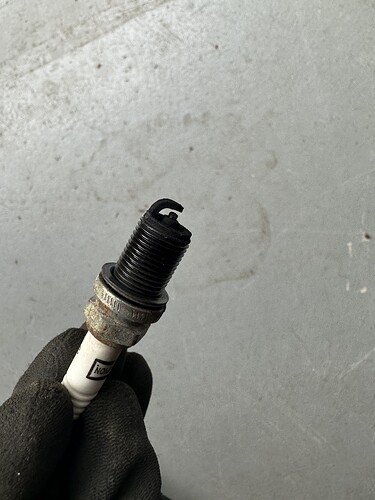Hi folks,
Hoping I can get some help with lawn equipment and small engine debugging here. Given the wide range of interests we have I expect someone might have experience with these things.
I’ve recently acquired some riding mowers, and this red one was working when I bought it (seller demonstrated it running) but it now won’t start when I brought it home.
Let me also say that I am handy and I have done some work on cars before, but I am pretty new to debugging an engine itself. I have been reading and watching a lot of YouTube, and I have a decent understanding of how things work now, but I might also be overlooking something dead simple, so please leave no stone unturned.
Specs:
Troy Bilt 13AX60TG766 Riding Mower, 2006 era. Engine inside is a Kohler Courage 19.
Symptoms:
- Battery is dead so I have the machine hooked up to a jump starter or jumped from my truck.
- Engine will crank but will not start. While cranking I hear a squeal/ whine from the rear of the unit where the battery is or would be located. And after a few seconds of cranking there is a buzzing sound coming from the engine.
I believe I am starting the unit correctly - the PTO is disengaged, the parking brake is on, the choke is on, the unit is in neutral.
Steps taken so far:
- Opened up air filter cover, removed air filter, can see carb butterfly. Confirmed that it is closed with the choke engaged. This rules out a loose linkage.
- Disconnected fuel line, yes we have gas going through the inline filter.
- I removed the fuel solenoid and verified that gas is leaking out of the carb bowl, and that the fuel solenoid actuates smoothly. I hear the click of the fuel solenoid when I turn the key on. This confirms that the fuel solenoid is operating properly.
In my later steps of debugging, with some of the items taken off as you will see in this pic, I did get the engine to sound like it was running for a few hits during cranking, and some white smoke came out of the exhaust, but the unit still did not run. I later learned that running the unit with the carb opened up and no air filter on may not have been the smartest move, and that I will likely have to put a new gasket behind the carb now that I have taken things apart there.
Anyways here is the pic of the most disassembled that I got the unit:
I’m wondering if it might be a fuel issue - like if the tiny amount of gas that was in the tank before is suddenly bad? But it ran fine when the seller demonstrated it running. I did add more gas to the tank but did not drain the bit of old gas.
Otherwise something to do with the spark plug or ignition coil?
Mostly I am trying to figure out what could have gone bad in the 90 minute likely bumpy road trip this mower took to get to my house. I have ruled out all of the “major problems” I have found on the internet and need help with deeper debugging.



